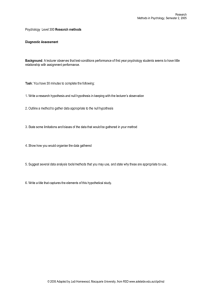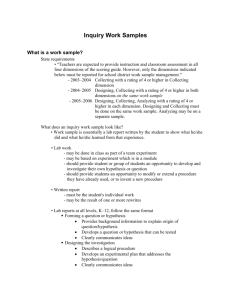1.2 Scientific Inquiry
advertisement
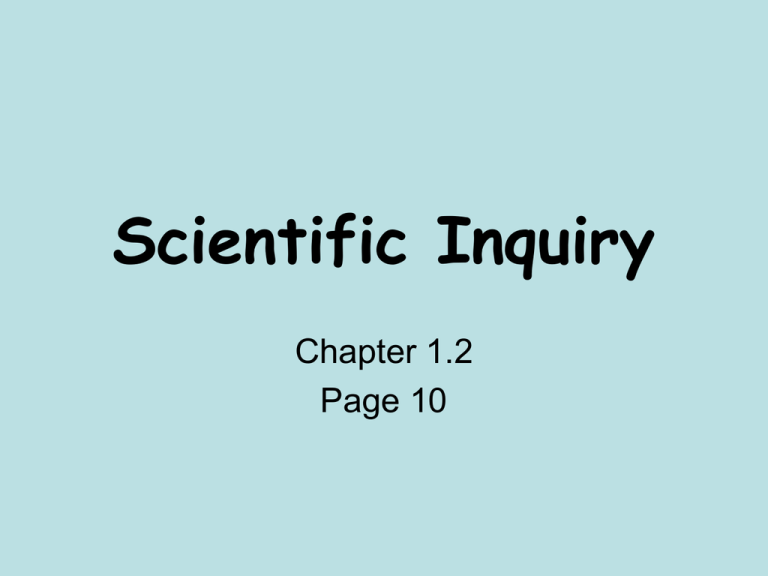
Scientific Inquiry Chapter 1.2 Page 10 Section 2: Scientific Inquiry How do scientists investigate the natural world? What role do models, theories, and laws play in science? The Nature of Inquiry There is no set path that a scientific inquiry must follow. Different scientists may choose different paths when studying the same event. 1. Pose Questions 2. Form a Hypothesis 3. Design an Experiment 4. Collect and interpret data 5. Draw conclusions 6. Communicate #1 Posing Questions • Scientific Inquiry often begins with a problem or a question. • Good scientific questions are ones that can be answered by making observations; based on evidence, not just opinion. Does additional weight cause the car to go faster down the ramp? #2 Developing a Hypothesis A hypothesis is a possible explanation for a set of observations or answer to a scientific question. • It is similar to an educated prediction. Increasing the weight of the car will increase its speed down the ramp. #3 Designing an Experiment • In an experiment, there are many different factors or parameters that could be changed: location, temperature, speed, materials, etc. These different factors are called variable parameters. In a controlled experiment, the effect of one of those variables is measured. Therefore only one variable parameter is changed in each experiment. #3 Designing an Experiment Hypothesis: Eating breakfast in the morning helps you stay awake in class. Day one: After 10 hours of sleep, you eat breakfast and stay awake in class. Day two: After 5 hours of sleep, you eat only toast and you get tired in class. Day three: After 4 hours of sleep, you don’t eat breakfast and you fall asleep in class. #3 Designing an Experiment In an experiment: • The manipulated variable is the one variable that a scientist is trying to determine its effect. It is the one variable that is changed in an experiment (eating breakfast, weight of the car). • The responding variable is the factor that is measured, the results of the experiment (alertness in class, the speed of the car). It measures the effect of changing the manipulated variable. #4 Collecting Data Data are the facts, figures, and other evidence gathered through observation. Quantitative observations (facts, figures, numbers, etc.) are usually recorded in a table or chart. These data are analyzed later and are often put in graphs for easier understanding. Qualitative observations are usually recorded in the lab journal. #5 Drawing Conclusions • Conclusions always relate to the hypothesis: did the data support or not support the hypothesis, not whether the hypothesis was right or wrong #6 Communicating A very important part of the scientific inquiry process is communicating the results of your inquiry. Purpose: -help others with your information -a check on the accuracy of your findings How Science Develops • Scientists use models and develop theories and laws to increase people’s understanding of the natural world. A model is a picture, diagram, computer image, or other representation of an object or process. Example: Bohr model of the atom Scientific Theories and Laws A scientific theory is a well-tested scientific concept that explains a wide range of observations. (“The best explanation for the data we have.”) Example: The theory that the Earth is flat. Theories can change if there is enough evidence against it. A scientific law describes an observed pattern in nature. But does not provide an explanation for it. Example: The law of gravity. The Nature of Inquiry Activity • Click the Active Art button to open a browser window and access Active Art about the nature of inquiry. End of Section: Scientific Inquiry


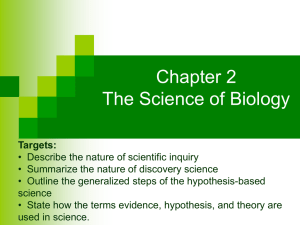





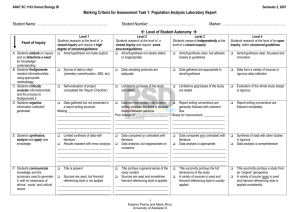
![STEVENSVILLE Science Cover Page[1]](http://s3.studylib.net/store/data/006940799_2-5e86147b6c878f54565bfbe25e407f47-300x300.png)
